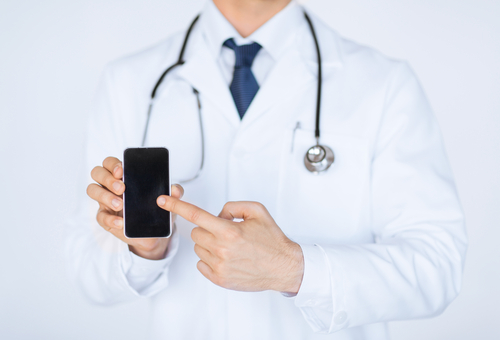
Is mobile technology the future of global healthcare? The Aid & International Development Forum (AIDF) recently released its second report on mobile technology use in regard to humanitarian work with a focus on health. The AIDF Mobile for Development Report Part Two: Transforming Global Healthcare Through Mobile Technology is part of the forum’s AIDF Mobile for Development series.
A Gateway
The data collected via mobile technology is increasingly viewed as a “gateway” for solving the developing world’s most challenging sustainability issues. The Sustainable Development Goals, also known as The Global Goals, are focused on finding innovative options for today’s most complex development issues. Global Goal 3, for example, discusses the right to health and how difficult it is to provide adequate care in resource-poor and otherwise-remote communities.
Thankfully, technology has the ability to rise above geographical barriers that exclude so many groups, namely women, children, disabled individuals, and the elderly, and provide these groups with access to the quality healthcare available in metropolitan areas. mHealth technology is therefore serving as a great avenue for providing new healthcare options.
mHealth Sustainability
The practical sustainability concerning mHealth in developing countries is currently up for debate. AIDF emphasizes the necessity of implementing mHealth solutions into sustainable business models, and argues that mHealth annexation with eHealth services is required to create a mobile-digital ecosystem that will function as a new big data resource for national health systems.
Security and Protection
Security and protection issues surrounding mHealth are also highlighted in the AIDF report as an increasing governmental concern. Overcoming current challenges in the way of adoption or acceptance is subsequently of particular focus moving forward with mHealth. Among these challenges is the security of mobile payment systems, as mobile money is believed to enhance financial transaction efficiency and transparency, as well as security in the healthcare industry. Mobile money refers to transactions that take place on mobile devices.
Benefits of mobile money for health include collection of funds from remote locations, an increase in healthcare worker safety by reducing or eliminating the need for cash transactions at clinics, targeted and timely emergency assistance, real-time records for bulk payments, and more. Mobile money services have already increased throughout sub-Saharan Africa quickly, with examples including the Mama Rescue program in Uganda. This program uses mobile money and eVouchers to connect emergency transport services with women in the throes of labor.
Leave No One Behind
The report outlines the many ways to utilize mobile technology in developing countries and its seemingly endless benefits, all of which center on one concept: leave no one behind. The spirit of Global Goals is to make certain everyone plays a role in crafting a more progressive, more inclusive world.
The first report from AIDF focused on unsustainable mHealth consumer businesses, as well as legislative restrictions of healthcare and telecoms markets, and how to overcome the difficulties these issues present. AIDF offers essential information on how to move forward in the mHealth industry, something that will hopefully take effect very soon.
